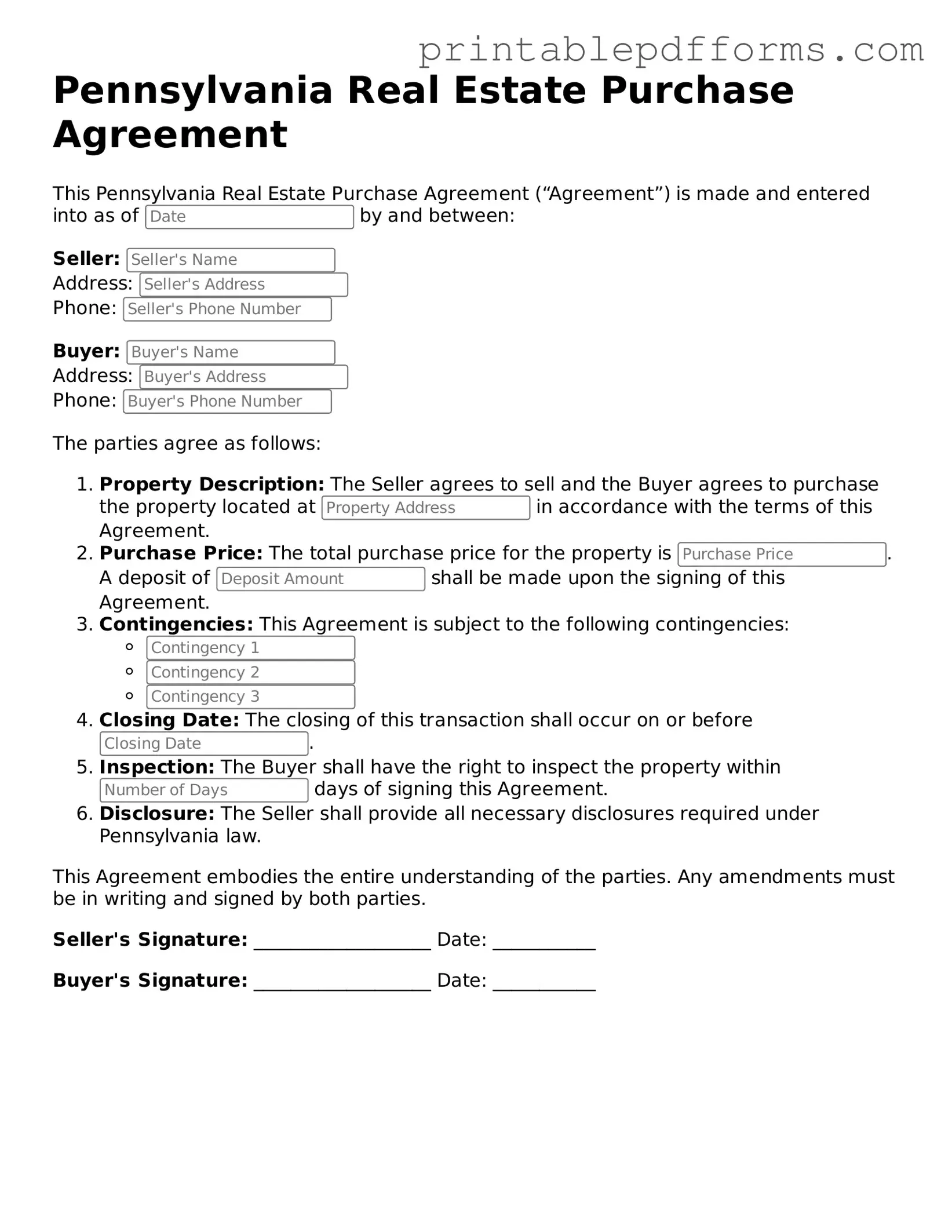The Pennsylvania Real Estate Purchase Agreement is a legal document used in real estate transactions within the state. It outlines the terms and conditions under which a buyer agrees to purchase a property from a seller. This agreement serves to protect both parties by clearly defining their rights and obligations throughout the transaction process.
What key elements are included in the agreement?
A typical Pennsylvania Real Estate Purchase Agreement includes several critical components:
-
Parties Involved:
Names and contact information of the buyer and seller.
-
Property Description:
A detailed description of the property being sold, including its address and legal description.
-
Purchase Price:
The agreed-upon price for the property.
-
Deposit Amount:
Information about the earnest money deposit, including the amount and when it is due.
-
Contingencies:
Conditions that must be met for the sale to proceed, such as financing or inspection contingencies.
-
Closing Date:
The date when the transaction will be finalized and ownership transferred.
Who typically prepares the Real Estate Purchase Agreement?
While buyers and sellers can technically draft the agreement themselves, it is common for real estate agents or attorneys to prepare it. Real estate professionals are familiar with the necessary legal requirements and can ensure that the agreement is comprehensive and compliant with Pennsylvania laws.
Can the terms of the agreement be negotiated?
Yes, the terms of the Pennsylvania Real Estate Purchase Agreement are negotiable. Buyers and sellers can discuss and modify various aspects of the agreement, such as the purchase price, contingencies, and closing date. It is important for both parties to communicate openly to reach a mutually acceptable agreement.
What happens if one party fails to fulfill their obligations?
If one party does not fulfill their obligations under the agreement, the other party may have several options. They can seek to enforce the contract, which may involve legal action. Alternatively, they may choose to terminate the agreement, depending on the specific circumstances and the terms outlined in the contract. It's advisable to consult with a legal professional to understand the best course of action.
Is the Real Estate Purchase Agreement legally binding?
Yes, once both parties sign the Pennsylvania Real Estate Purchase Agreement, it becomes a legally binding contract. This means that both the buyer and seller are obligated to adhere to the terms outlined in the agreement. However, certain contingencies may allow for cancellation without penalty if specific conditions are not met.
Real Estate Purchase Agreement forms can be obtained from various sources, including:
-
Real estate agents or brokers
-
Legal document providers
-
Local real estate associations
-
Online legal service websites
It is crucial to ensure that any form used is the most current version and complies with Pennsylvania laws.
